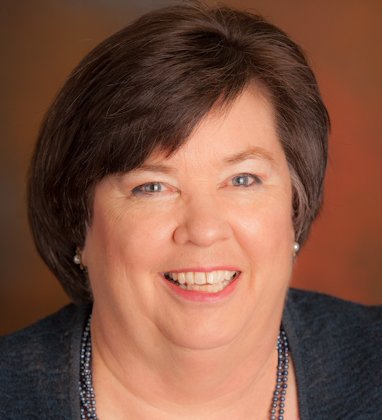
Chapter 13 bankruptcy is flexible, powerful, and a bit different in each bankruptcy district.
It is a reorganization plan for an individual with regular income who can make some payment to creditors.
Unless they elect otherwise, debtors keep all of their assets in Chapter 13 and get a discharge of their debts at the end of the case.
Here are the basics of how Chapter 13 works.
Who makes the plan?
The debtor proposes a payment plan guided by the application of the means test.
The plan is filed with the schedules commencing the case; a copy of the plan or a summary of it is mailed to every creditor.
The means test formula may result in there being no payment at all to general unsecured creditors.
What does the plan provide?
The plan must be proposed in “good faith” and meet two other tests:
Best Interest of Creditors Test: the plan must give unsecured creditors at least as much on their claim as they would have gotten if the debtor filed Chapter 7; and
Best Efforts Test: the plan must provide unsecured creditors an amount equal to the debtor’s monthly disposable income multiplied by 36 (for those with incomes below the state median) or by 60 (for those with incomes above the median).
The plan must also provide for payment in full of priority claims and generally provide for payment of the value of secured claims on personal property (but not real estate), in full over the life of the plan.
The amount the debtor pays to unsecured creditors is the largest of those three amounts:
- the amount to be distributed in a hypothetical Chapter 7;
- the amount of disposable income according to the means test; or
- the amount necessary to pay the priority claims in full.
Plan payments
Plans run from 3 years to 5 years.
Long term debt, like house mortgages, need not be paid off in full in the plan, though the plan might cure any defaults on long term debt.
Payments can be the same over the life of the plan; they can start low and increase at intervals; or they can vary with the seasons.
While plan must provide enough money to pay the priority claims (most commonly taxes and support) in full, payments to other creditors may be little or even nothing.
Role of the trustee
The trustee acts as the disbursing agent for the payments made into the plan: he collects the debtor’s payment and pays it to creditors as provided by the plan in that case.
Where a Chapter 7 trustee may take possession of assets and sell them, the Chapter 13 trustee just takes the debtor’s plan payments.
The trustee also reviews the plan and challenges those plans that don’t, in the trustee’s opinion, meet the tests for confirmable plans set out in the Bankruptcy Code.
If the trustee and the debtor can’t agree on the terms of the plan, a judge will decide if the plan can be confirmed.
Once the plan is confirmed, the trustee pays creditors regularly from the payments made by the debtor. Generally, all payments on debt existing at the beginning of the case must be paid through the trustee; current mortgage payments and some leases are among the exceptions.
When plan payments begin
The debtor must make the first payment on the plan within 30 days of the filing of the plan and each month thereafter.
Payments begin before the first meeting of creditors (the § 341 meeting) and continue even while objections to confirmation are pending.
Payments must be made in certified funds, such as money orders or cashiers checks, or by voluntary wage deduction. Some trustees accept electronic payments.
If you stop making plan payments, the trustee will ask that your case be dismissed.
Role of creditors
Creditors’ objections are limited in Chapter 13.
They don’t get to vote on whether they will accept the plan, as they do in Chapter 11. They can object only if they contend the plan does not meet the best interests of creditors test and the best efforts test, or if they contend the debtor has not proposed the plan in good faith.
A secured creditor can also object to the value that the plan places on the creditor’s collateral. (The trustee can raise any objection that a creditor could raise).
Objections to confirmation are usually resolved by negotiation between the debtor’s counsel and the objecting party, frequently by some sort of compromise.
If the parties can’t reach a compromise, the judge will decide the question.
The confirmed plan
Once the plan is confirmed, it binds all the parties.
The creditors must accept the payments provided; the values given in the plan for the secured portion of claims are fixed; and the debtor’s payments over the life of the plan are fixed, unless the debtor’s circumstances change and the plan is modified.
Living in Chapter 13
The restrictions on a debtor in Chapter 13 are few:
- make plan payments;
- don’t incur significant new debt without court approval; and
- keep current insurance on any asset that is collateral for a debt.
The debtor can move or change jobs without restriction.
Court approval may be needed in advance of getting a new car loan; incorporating a business that is an asset of the estate; or refinancing, selling or purchasing a home. Getting that approval can take 30-45 days.
Modifying the plan
Plans can be changed if there is an interruption of income, through job loss or ill health.
Plan payments can be lowered or the percentage paid to creditors changed if the debtor’s income or expenses in the future won’t fund the plan as originally confirmed.
The modified plan must meet the tests for plan confirmation. Sometimes, the amount of money to be paid into a plan must be increased, where the claims that are actually filed and allowed are greater than estimated at the beginning of the case.
The cost of Chapter 13
Attorneys fees in Chapter 13 are usually paid in part before the case is filed, with the unpaid balance paid by the trustee from the payments the debtor makes into the plan.
With the increase in attorneys fees for all bankruptcy proceedings necessitated by bankruptcy “reform” in 2005, Chapter 13 may be a way to pay for good legal representation over time.
If the case is more complex or there are contests to confirmation or the allowance of a claim, the attorneys fees may exceed the initial fees set out at the beginning of the case.
The court must consider requests for additional attorneys fees, and if the request is approved, the additional fees will be added to the debts paid through the plan.
The Chapter 13 discharge
Discharge is the legal forgiveness of debts. The debts are discharged at the completion of the plan.
When the discharge is entered, no creditor who had notice of the bankruptcy can try afterwards to collect the debt from you personally unless the debt is one for a non dischargeable debt such as criminal restitution, domestic support, or student loan that wasn’t paid in full through the plan.
While the bankruptcy filing stays on your credit record for 10 years from the filing of the case, (and several credit reporting agencies remove it after 7 years) it becomes less and less significant in a creditor’s decision to grant new credit with every year that passes.
Chapter 13 practice varies widely from district to district depending on the custom and attitudes of the local trustees and judges about what is “reasonable” and in “good faith”.
A successful Chapter 13 case requires an experienced bankruptcy lawyer familiar with the prevailing judicial attitudes in the district and the myriad of unwritten local rules.
More
Chapter 13 after confirmation of the plan
How exemptions work in Chapter 13
Image courtesy of Wikimedia and the Max Planck Digital Library
